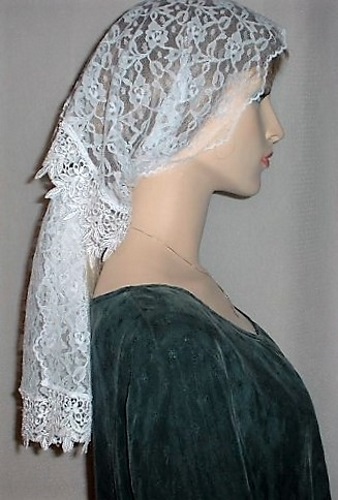September 2009
The other night Kuti and I came home to find my daughter Ahuva in the den, spools of colorful crocheting thread spilled next to her on the couch. Earlier that evening, before we left, Ahuva had just finished the last stitch on a beautiful blue kippah, trimmed with a few rows of intricately patterned design. She had made it for a special needs teenage boy she is a counselor of in the “Friends” organization where she volunteers. All the volunteers and many of the children are religiously observant and the boy wanted to share a sense of the spirituality of the weekends and show his respect, by wearing a kippa. So, Ahuva crocheted him one. The yarn looks more like thread, the thinness making the detailed work painstaking and meticulous. As soon as she tied off the ends of the finished product, she turned to Netanel and asked him what colors he would like for a new kippa for fifth grade. We settled on a black background with the patterned design in two shades of green and a warm creamy off- white. Elitzur’s kippa, which she finished just in time for his first week of first grade, went much faster. Elitzur likes when his kippa is large enough to hug most of his head so it doesn’t fly off when he runs. So Ahuva made him a kippa made out of slightly thicker yarn to make the big job move more quickly.
The Hebrew word, kippa, literally means dome, because of its shape, and the English term is logically, skullcap. The Yiddish term used is the word yarmulke, derived from an Aramaic phrase meaning “awe of the King” or from the Hebrew meaning “those who tremble before the Lord.” The kippa is meant to remind us that we are always in the presence of G-d and we should act accordingly, with the proper respect and reverence. It is a symbol of our awareness of and submission to a higher entity.
When I help Elitzur get into pajamas and then into bed after his nightly shower, I love how he reaches for his kippa so he can say the Prayer before Sleeping and then flings it onto the dresser near his bed. I love waking my boys in the morning and watching them, still groggy with sleep, grope for the kippot they placed near their beds before they went to sleep, so they can get out of bed. Even when we go on hikes through the country, wading through springs and riverbeds, the kippot stay on their heads, but as soon as we get to a deep pool of water, the eyeglasses and kippot get placed safely under a tree, ready to be put back on when they get out, in time to say the blessings on the picnic lunch waiting for them.
The tradition to wear a kippa is not derived from any Biblical passage but it’s a custom, which evolved as a sign of our recognition that there is a Divine Presence always over our heads. The Talmud state, “Cover you head in order that the fear of heaven may be upon you.” And every morning we say a blessing, also taken from the Talmud which thanks G-d for “crowning Israel with splendor”.
Some people interpret Jewish law as requiring men to cover their heads only when praying or speaking G-d’s name while reciting a blessing, during Torah study and while in a synagogue or yeshiva. Orthodox males keep their heads covered all the time. The Talmud says that no man should walk four paces without something covering his head. It’s easy to remember G-d while at the synagogue or around the Shabbat table. But Jewish consciousness is meant to pervade all aspects of our lives — how we treat others, how we conduct business, and how we interpret world events. Actually, there is not a time in the Jew’s life when he is not in the presence of G-d, nor is there any part of his life which is free from the service of G-d. And what better way to infuse us with a sense of our humility than to cover our heads—the seat of our intellect, our prized possession and source of our (sometimes unfounded) pride.
You can choose from a variety of colors and sizes and the kippot can be velvet, satin, suede or knitted and it can contain any sort of design, as long as it covers the crown of the head. Kippot, nowadays, make a statement. The Jewish New year has just passed and many men in the synagogue wore white kippot, symbolizing the purity and cleanliness from sin that we want to embody on those holy days. The Ultra Orthodox Hassidic sects stick mainly with the black velvet kippot, often wearing them under their black hats. The Religious Zionist movement wears the knitted kippot, often attached with clips to hold them in place. During the struggle for Gush Katif, mothers and girlfriends were busy crocheting orange kippot for the many young men who wanted to declare their support and political affiliation by wearing the color that symbolized opposition to the Disengagement. The Sephardic communities, specifically those originating from Bukhara, traditionally wear large, brightly woven, brocade kippot, though they also found a market among little boys who have trouble getting the smaller kippot to stay on their heads. Orthodox Jewish women also wear head coverings, though in a different way and for different reasons. All the way back in the time of Moses, it was customary for women to cover their hair. We get a glimpse into this tradition from the Scriptures. In the book of Numbers (5:18) we are told  the story of a woman whose husband suspects her of adultery. The verse reads, and I include three different translations: “And the priest shall set the woman before the Lord and unbind the hair/ uncover the woman’s head/ let the hair of the woman’s head go loose.” The unbinding or uncovering or loosening of a woman’s hair, is perhaps the basis for the concept of a loose woman… the release of inhibitions, the desire to be free from a code of behavior.
the story of a woman whose husband suspects her of adultery. The verse reads, and I include three different translations: “And the priest shall set the woman before the Lord and unbind the hair/ uncover the woman’s head/ let the hair of the woman’s head go loose.” The unbinding or uncovering or loosening of a woman’s hair, is perhaps the basis for the concept of a loose woman… the release of inhibitions, the desire to be free from a code of behavior.
There were places and times in the past that all females gathered and covered their hair. Who doesn’t have an image of the daughters of Tevye the Milkman in “Fiddler on the Roof”, their innocent faces and bits of braided hair peeking out of their sweetly tied  kerchiefs? Today, tradition states that only married women cover their hair. While some tend to think that this is a sign that the woman is submissive to the man or that she is not of importance, it is actually the opposite. It is the belief of the Jews that the hair of a woman is sensual and should be reserved for her husband. A head covering is simply part of the appropriate dress for married women. It lends importance to the sanctity of marriage and the holy relationship between husband and wife. Some married women think of their hair covering as a sign, like a wedding ring. It says, this woman is taken…is unavailable. This woman will no longer be flirting! The modesty shown with a head covering is the exact opposite of an act of flaunting oneself.
kerchiefs? Today, tradition states that only married women cover their hair. While some tend to think that this is a sign that the woman is submissive to the man or that she is not of importance, it is actually the opposite. It is the belief of the Jews that the hair of a woman is sensual and should be reserved for her husband. A head covering is simply part of the appropriate dress for married women. It lends importance to the sanctity of marriage and the holy relationship between husband and wife. Some married women think of their hair covering as a sign, like a wedding ring. It says, this woman is taken…is unavailable. This woman will no longer be flirting! The modesty shown with a head covering is the exact opposite of an act of flaunting oneself.
I remember shopping with Avigayil before she got married, two years ago. The buying of head coverings, for some young brides, is a very emotional step. Not because they are thinking, “Oh, how unfair that I have to cover my beautiful, long head of hair that was always my crowning glory.” But because they are realizing that marriage is the true crowning glory, the most sublime part of creation, and they are entering this new rank…this new level of service to G-d, now as two people who have found each other. It is the loveliest thing to watch these young blushing brides, standing in front of a mirror, winding their thick long hair into bands and buns and trying on those stylish bandannas, trying out different tying and wrappings that they have seen their already married friends maneuver. I love coming to synagogue on Shabbat, and find myself sitting behind a newly married young girl. She self-consciously and proudly pats at her scarf, tucking stray hairs under the fabric, making sure the knots haven’t loosened immodestly.
There are various customs and interpretations of the amount of hair to be covered and what should be used to cover your hair. Some women wear wigs, which can be gloriously lush creations, even more attractive than the woman’s own hair! The popular choice today for the younger women in Israel, among the religious Zionist camp, is the scarf or bandanna; the older ones (like me!) are still doing hats and berets. But whatever your personal preference is, whatever fashion or religious statement you want to make…a married woman’s head covering is a matter of modesty…unassuming humility.
Men and women both know—that with our kippot or kerchiefs—when we cover our hair we are representing something. We are claiming our Jewish pride. In the Diaspora, there was more of a sense of self-consciousness, or, unfortunately, sometimes fear, when walking down the street in Jewish headgear. Today, here in Israel, it no longer takes courage to wear this instantly identifiable mark of a Jew. But we are making a statement, and it obligates the wearer to live up to a certain standard of behavior. Maybe it will make us think twice before cutting in line at the supermarket or acting rude to a waiter. Of course, putting on a head covering doesn’t automatically make us role models. But it makes us public ambassadors for G-d and gives us a chance to sanctify His name.
Shalom,
Shira Schwartz
Christian Friends of Israeli Communities
